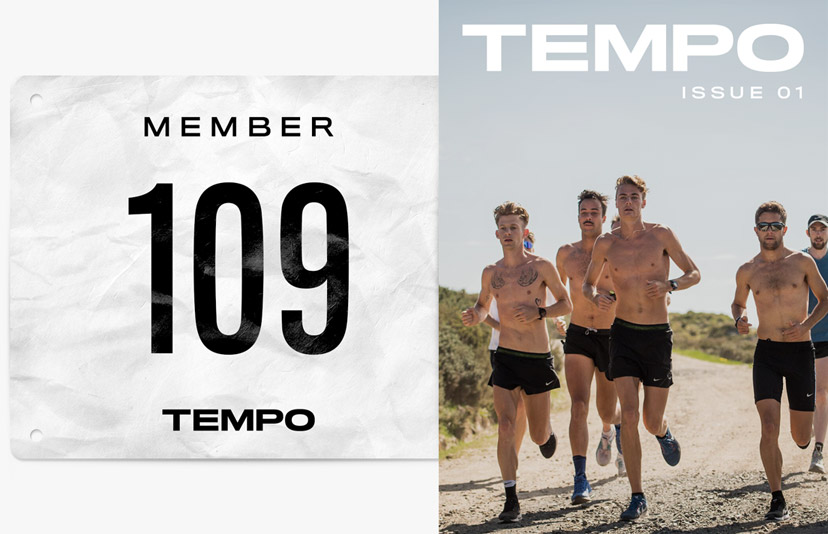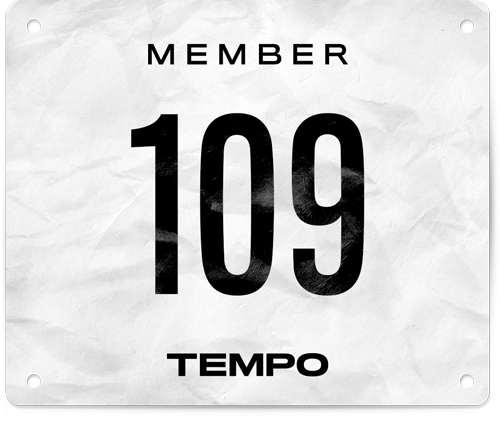Lifestyle
The man creating the footwear of tomorrow
Talking tech with Nike Running's Director of Innovation, Ernest Kim
Where to start with Ernest Kim? One of the pioneers of sneaker culture in a lot of respects, back in the early 2000’s Kim ran Kicksology, the go-to blog for anyone wanting in-depth reviews of (mostly) basketball sneakers (you may know him as Professor K).
By late 2004 Kim started to wind down his blog, realising his passion for sneakers was taking over his life (he had amassed more than 1,500 pairs over a 4 year period - basically a pair each day for 4 years!). During this period in late 2004, Kim stumbled across the first Nike Free and fell in love with it.
Fast forward a couple of years to 2007 and Kim landed a product manager role at Nike, after spending a couple of years with well regarded sneaker website, Sole Collector. One of Kim's first roles was working on LunarGlide+ franchise and developing Nike’s new midsole architecture.
Today Ernest Kim is the Director of Advanced Footwear Innovation for Nike Running. He spearheaded the creation of the new Nike Epic React, and we caught up with him in Seoul, South Korea to get some insights into the new cushioning system.
Below is a lightly edited transcript of our conversation.
How much of your initial idea and your original thinking for React was maintained through the 3 year journey to bring the product to life?
Honestly it was surprising how much was retained. Of the original brief, I would say 90% of the goal was accomplished, and that’s not typical. Often you leave quite a bit on the table. In this case, and I think it’s because of some of the tools we had access to in terms of the computational design tools and the rapid prototyping, we were able to achieve a lot more of the goal than we could have in the past.
Do you feel a strong sense of pressure when you’re working on something as important to Nike as React? Or is it exciting to be able to deliver such a huge innovation for the brand?
Oh I absolutely get a buzz out of it. That’s why we do what we do, to have the opportunity to work on these fundamental technologies. That doesn't come around very often. Last time we did a really big foam innovation was Lunarlon back in 2008, so to be a part of one of these big meaty innovations is a huge thrill.
Talk to us about energy return and durability.
The funny thing is internally we use the term ‘energy loss’. We’re trying to come up with a foam that will lose as little energy as possible so that you as a runner will lose as little energy as possible.
The way that translates to a runner is just in how you feel after a run. Do you feel like you have a bit left after your run? Could you push a bit further?
For us that’s what we’re measuring from a mechanical perspective is how much energy is being lost in the foam.
The mechanical testing showed us that the shoe was off the charts in terms of durability. Typically we would expect foams to maintain 1G of impact and 1G of energy return after 250-300 miles of wearing. 1G is what our historical testing has shown us a common runner would be able to perceive.
What we’re seeing in React is that even after 500 miles of wear we are seeing less than ½ a G in degradation of impact and energy return, which is just phenomenal.
That’s a mechanical measurement but we wanted to validate that with real runner perceptions. So we took shoes that already had 500 miles of wear on them and had our testing team clean them up. We then gave them to some wear testers, who put them on under a table so they couldn’t see the shoes, and after they got back from a 5km loop around campus we asked them to tell us how many miles they thought the shoes had on them.
The closest guess to 500 miles was 20 miles.
Can you explain a bit more about computational design and what that means for the innovation cycle?
The whole design team is so excited about the possibilities that this is unlocking.
The designer who designed React, Matt Pauk (Running Footwear Designer), was so in love with computational design. Matt was the product designer and then we had a seperate computational designer, and those guys work hand in glove to create this midsole design.
The power of computational design is in Matt acknowledging that no way could he have come up with this design by hand, it’s just impossible to get the level of detail, especially three dimensionally.
Access to computational tools is opening up a whole new world for us. It used to take us months to prototype something and wait for it to get turned around, and now we can do the same thing in one hour.
Actually this is not the first time we have used computational design, the first time we did that was for Allyson Felix’s spikes at Rio. But doing it for a whole midsole is what posed a challenge.
This is an incredibly exciting time for us. For a little while people thought the low hanging fruit had been picked in running shoes. But now with innovations like ZoomX and React, we’re realising there’s a lot more possibilities. Computational tools have unlocked this.
"When we did the first Lunar back in 2007 we would wait months for a prototype to come back so we could test it, whereas now we can go through 100 stages of prototyping in an hour"
Ernest Kim
This shoe is packed with visible technology. As someone who’s intimately aware of sneaker culture online, you no doubt saw the reaction to the image leak of Epic React last week. When you guys were designing the product did you expect the heel clip to cause so much conversation?
We actually didn’t give it much thought. We were completely focused on delivering on that experience for the runner.
The expression we used internally was ‘make sure we deliver on the magic’. Because that’s what got us so excited about react in the early stages. Getting runners reactions in the early stages of the prototype and seeing how excited they were, our priority the whole way through was to keep that magic in the product.
So that was top of mind, and focusing on being able to deliver the magic at scale.
What’s the reasoning behind the Ultramarine colourway? Is it in reference to the re-release of the classic Air Max 180 colourway coming this Air Max Day?
I don’t know about that, but I can say a big part of what drove the colour direction is this idea that opposites react.
When the design team heard about React and these opposite characteristics of soft-and-responsive, lightweight-yet-durable, that resonated with them and they coined this expression ‘opposites react’.
So that’s what drove the colour direction of light and dark, blue and pink.
It’s also important to note that both colourways are available for both genders, after getting feedback that guys always want the women’s colourwarys and vice versa. We’re going to continue that in seasons moving forward as well.
Shoes like the Flyknit Racer, the Streak, even Zoom Flys now are being worn casually. What’s your take on modern running shoes coming into the mainstream and into sneaker culture?
I think it’s awesome. The acceptance into the wider culture comes if you do your job right.
We can’t go and target that because we’re working so far in advance and it’s such a moving target, so we focus on trying to find these authentic performance opportunities and put all of our efforts on delivering on those.
Getting that wider acceptance comes as a consequence afterwards.
Personally you have a great history with the Nike Free, is that your favourite Nike running shoe of all time (disregarding the Epic React)?
It’s funny you mention the Free, because I would have to say that yes, it has the most special place in my heart.
I was always into basketball when I was younger, but anytime I tried to run to build my fitness I would always get injured.
The first time I was ever able to run injury free was when I bought some Nike Free. This was before I joined the company, I read this article about them and I thought it was ridiculous, this pair of shoes that makes you feel like you’re not wearing shoes, and you have to pay money for this? But then I tried it and it felt amazing. I was able to run consistently without getting injured.
That's the thing that really led me to coming to work for Nike. I didn’t believe the shoe could have that much impact and to experience if first hand was pretty mind blowing.
I was lucky enough to get to work on some Free’s as well. I was also lucky enough to work on the Lunarglide which I feel a great attachment to.
"The Epic React is such a great example of a shoe that only Nike could do. We’re bringing together this incredibly advanced computational design, this incredibly advanced computer simulation, all in service of a shoe that is accessible to the masses.
I love that we’re able to do that and I really don’t think anyone else could do that at the level that Nike can"
Ernest Kim
When you finally sign off on Epic React, do you guys take a moment to reflect on what you’ve created?
You know its funny, we really don’t. It’s a continuous process for us. We started working on the next evolution of this a year ago.
When I used to do Kicksology I would interview athletes and one of the recurring themes was how many of the best athletes had so little introspection. I was surprised to find how little these athletes spent time on their accomplishments.
We’re always focused on what the next opportunity is moving forward.
Speaking of the next evolution, where else will we see React popping up this year?
I can’t give any specifics but I would expect React to be treated in a similar way to how Lunar was rolled out.
Editor's Note: TEMPO travelled to Seoul, South Korea for the launch of the Epic React and to interview Ernest Kim at the invitation of Nike.


